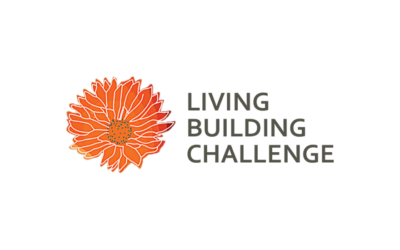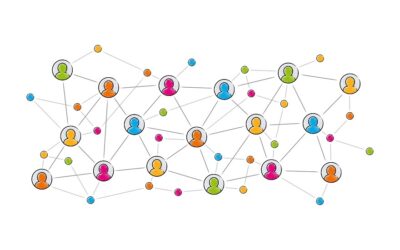“When we share the planet with other living things, we survive together.”—National Geographic
Our community conversations during our earlier “Conservation Is Not Closed” webinars were so well received that we hosted an “Is Conservation Now an Afterthought?” follow up webinar, where 72 attendees heard five brief presentations followed by an open discussion that emphasized, once again, that even in a time of crisis, conservation remains a core mission of zoos and aquariums. Although much of the discussion focused on necessary reductions in this time of dramatically reduced budgets, speakers also focused on the path forward.
Key takeaway themes from our presenters and audience were focus, synergy, and collaboration to create greater impact overall:
-
Norberto (Bert) Castro/Phoenix Zoo and Arizona Center for Nature Conservation presented the history of their international program and their more recent emphasis on Arizona-based conservation efforts—after a branding study in 2014, they were renamed the Phoenix Zoo/Arizona Center for Nature Conservation. Over the past five years they’ve experienced significant growth in their donor base, with the Zoo’s conservation funding increasing from $500,000 to $2,500,000/year. A local Native American community has been a major donor to saving local species. COVID-19 has affected field conservation via restrictions on travel and not placing staff in high-risk situations.
-
Liza Dadone/Cheyenne Mountain Zoo noted that their budget has been primarily based on a highly successful “Quarters for Conservation” program plus a $0.75 charge added to tickets, raising about $500,000/year. However, due to decreased attendance, overall conservation funding is down by 50%. They’ve continued their palm oil efforts, long-term funding of their signature projects, e.g., black-footed ferrets and Panamanian amphibians, and, via AZA’s SAFE program, have maintained their active participation in giraffe conservation (although she noted that in a recent survey, the Giraffe SAFE program anticipated major reductions or no funding in 2021).
-
Nadine Lamberski/San Diego Zoo Global spoke of the history of their conservation programs developed by Dr. Allison Alberts and others, and in this time of challenges, their efforts to focus and combine their 100 conservation projects into eight focused “conservation hubs”. COVID-19 has emphasized the importance of One Health (connecting wildlife, domestic animal and human health) and as this is not likely the last pandemic, we may be using what we learn again. To that end, San Diego Zoo Global has combined Animal Health, Research, and Conservation into one integrated unit, allowing them to gain greater focus, synergy, and collaboration, and therefore deliver greater impact.
-
Bert Vescolani/Denver Zoo noted that their recently launched strategic plan, including sustainability and education combined with field conservation, provided them with a great foundation on which to base decisions during the pandemic. While they’ve had to make staff reductions, they’ve maintained all program leads for the field programs as a basis for stability and rebuilding. Their program features 50% of their field conservation efforts locally and 50% internationally. Their decades-long commitment to conservation in Mongolia will continue and emphasizes the importance of long-term community involvement to reduce human/animal conflict.
-
Anna Mekarska/Wroclaw Zoo spoke to the challenge at their Zoo which is funded by attendance. Again, they’ve undergone an approximately 50% reduction in their conservation spending. While they have a strong focus on Southeast Asia, a WAZA education grant in Laos has been challenged by an inability to travel there. They’ve moved to virtual lectures and a virtual “Run for Conservation”.
Open discussion topics included:
-
Although there isn’t a clear or easy answer, how do we face the “forced financial choices” between the literal survival of our institutions and our commitments to field conservation?
-
As nearly all the above institutions face major (50%) cuts in conservation funding, appropriate exit (and entrance) strategies for projects are even more important to ensure reasonable expectations on both sides.
-
The importance of capacity building, so that when catastrophic events like COVID-19 occur, international projects aren’t dependent on assistance and expertise from the developed world.
-
Determining what conservation messages resonate with our audiences.
-
Addressing the increased use of plastics in the pandemic.
-
Assisting partners in program development, especially programs that may come with lower costs in a time of financial crisis, focusing more on human capital than financial capital, e.g. assistance with educational programs and business plans.
-
The importance of timely and sensitive discussions with conservation partners whose funding is being reduced.
-
Addressing “survivors’ guilt” that often affects those who are left after furloughs and layoffs. In conservation, the passion is often great and reducing or discontinuing programs can cause serious morale issues.
-
Identifying additional funding sources–regional and national conservation agencies, perhaps looking at new ones for the zoo and aquarium community; e.g., the United National Environmental Fund (UNEP) as a group. This includes a renewed emphasis on collaboration and partnerships.
Since this ever-changing new tomorrow demands that change will be ongoing, we solicited thoughts on additional conservation topics for future webinars on zoo and aquarium conservation. Sustainability at our institutions and in our field programs, as well as further discussion on decision-making processes during conservation budget reductions, were identified as worthy of further discussion. We invite you to share your input below on further discussion topics as well.
If you were unable to attend this webinar, the full recording is located here.





